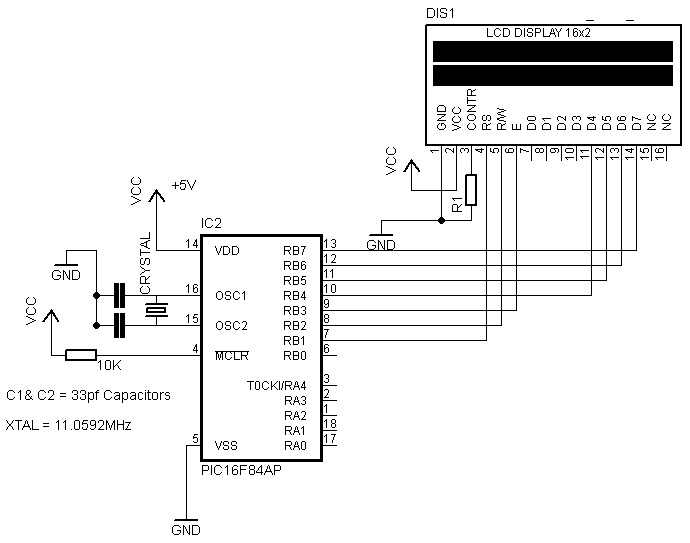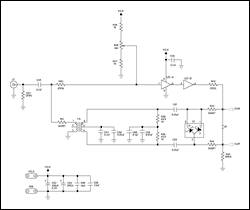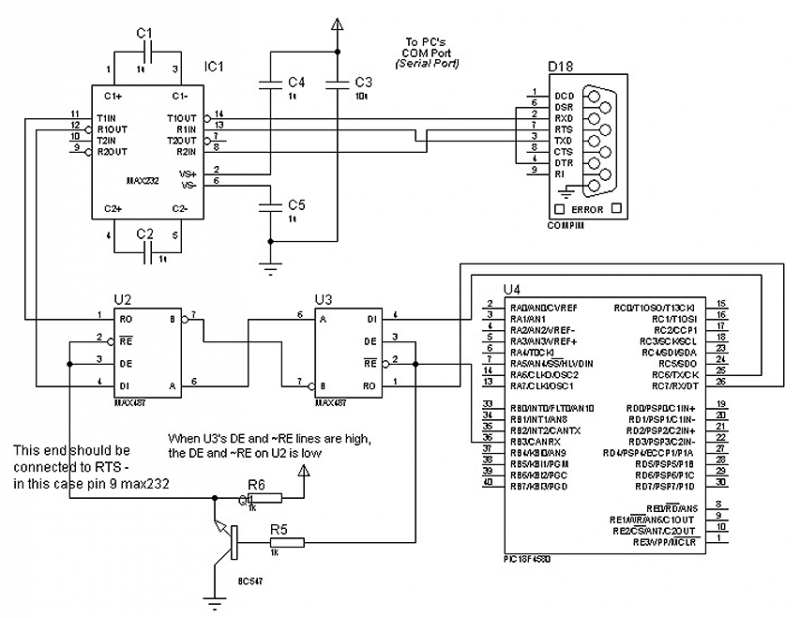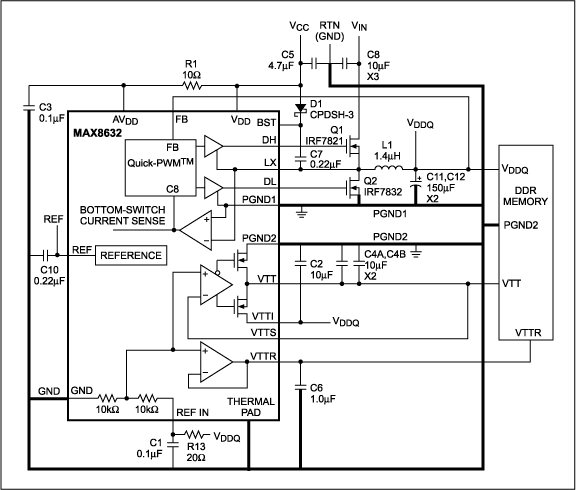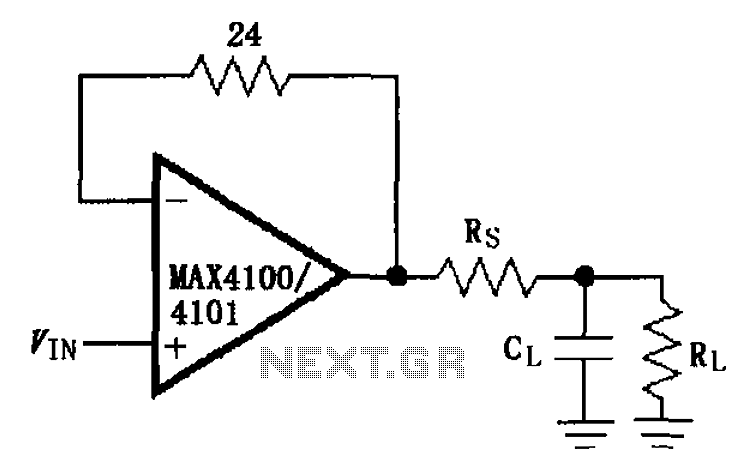
max 232 interfacing with
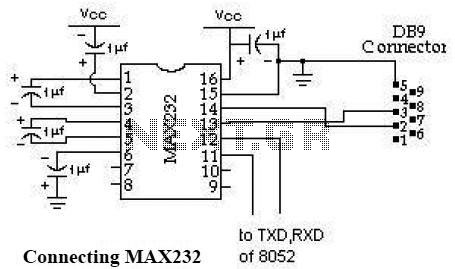
The MAX232 schematic is utilized to connect a microcontroller to the standard RS-232 port of a personal computer. It serves as a signal level converter necessary for the transition between TTL and RS-232 standards. The MAX232 requires five external 10µF capacitors, which are employed by the internal charge pump to generate +10 volts and -10 volts. The MAX232 features two receivers and two transmitters, allowing the use of two serial ports with a single chip. For this project, only one transmitter will be used. The only required connection to the 8052 microcontroller is a jumper from pin 3 of the 8052 to pin 11 of the MAX232. The accompanying circuit diagram illustrates the connection between the RS-232 interface, the microcontroller, and the serial port DB9 connector. Data is transmitted and received on pins 2 and 3, respectively. The Data Set Ready (DSR) signal indicates that the Data Set (e.g., modem or DSU/CSU) is operational. Similarly, the Data Terminal Ready (DTR) signal informs the Data Set that the Data Terminal Equipment (DTE) is powered on. The Data Carrier Detect (DCD) signal indicates that a valid carrier signal is being received from the remote modem. Pins 4 (Request To Send - RTS) and 5 (Clear To Send - CTS) are utilized for control purposes. In most asynchronous communication scenarios, RTS and CTS remain active throughout the session. However, when the DTE is connected to a multipoint line, RTS is employed to activate and deactivate the carrier signal on the modem. In such cases, it is crucial that only one station transmits at a time due to shared return lines. When a station intends to transmit, it raises RTS, prompting the modem to activate the carrier, typically waiting a few milliseconds for stabilization before raising CTS. The DTE commences transmission upon detecting CTS. After completing its transmission, the station lowers RTS, which in turn causes the modem to drop CTS and the carrier signal. Clock signals (pins 15, 17, and 24) are designated for synchronous communications. The modem or DSU extracts the clock from the data stream and supplies a steady clock signal to the DTE. It is important to note that the transmit and receive clock signals do not need to be identical or operate at the same baud rate. Additionally, the transmit and receive leads (pins 2 or 3) can be reversed depending on the equipment type—Data Communications Equipment (DCE) or Data Terminal Equipment (DTE).
The MAX232 integrated circuit is essential in bridging the communication gap between microcontrollers and RS-232 devices. Its architecture ensures that voltage levels are appropriately adjusted to meet the RS-232 specifications, which are significantly different from the TTL logic levels used in microcontrollers. The presence of two receivers and two transmitters allows for flexible communication setups, enabling the design of systems that require dual-port functionality.
In the circuit design, the use of five external 10µF capacitors is crucial for the operation of the internal charge pump, which generates the necessary voltage levels for signal conversion. These capacitors must be connected correctly to ensure stable operation. The MAX232 is typically powered by a 5V supply, and proper grounding is essential to prevent signal integrity issues.
The connections to the microcontroller and the DB9 connector must be made with attention to detail, ensuring that the data flow is correctly established. The microcontroller's UART (Universal Asynchronous Receiver-Transmitter) pins are directly linked to the MAX232, allowing for seamless data transmission and reception. The functionality of control signals like RTS and CTS enhances the reliability of the communication, especially in environments where multiple devices may be interacting over a shared medium.
In summary, the MAX232 circuit serves as a vital component in serial communication applications, providing the necessary voltage level conversion and facilitating reliable data exchange between microcontroller systems and RS-232 compliant devices. Proper implementation of this circuit can significantly enhance the performance and robustness of communication systems in various electronic applications.Schematic MAX232 is used to interface the microcontroller to standard RS-232 port of personal computer. It is a signal level converter necessary for conversion between TTL and RS-232 standards. The MAX232 requires 5 external 10uF capacitors. These are used by the internal charge pump to create +10 volts and -10 volts. The MAX232 includes 2 receivers and 2 transmitters so two serial ports can be used with a single chip.
We will only use one transmitter for this project. The only connection that must be made to the 8052 is one jumper from pin 3 of the 8052 to pin 11 of the MAX232. The circuit diagram shown below illustrates the connection of RS232 with microcontroller and serial port DB9 connector.
Data is transmitted and received on pins 2 and 3 respectively. Data Set Ready (DSR) is an indication from the Data Set (i. e. , the modem or DSU/CSU) that it is on. Similarly, DTR indicates to the Data Set that the DTE is on. Data Carrier Detect (DCD) indicates that a good carrier is being received from the remote modem. Pins 4 RTS (Request To Send - from the transmitting computer) and 5 CTS (Clear To Send - from the Data set) are used to control. In most Asynchronous situations, RTS and CTS are constantly on throughout the communication session. However where the DTE is connected to a multipoint line, RTS is used to turn carrier on the modem on and off.
On a multipoint line, it`s imperative that only one station is transmitting at a time (because they share the return phone pair). When a station wants to transmit, it raises RTS. The modem turns on carrier, typically waits a few milliseconds for carrier to stabilize, and then raises CTS.
The DTE transmits when it sees CTS up. When the station has finished its transmission, it drops RTS and the modem drops CTS and carrier together. Clock signals (pins 15, 17, & 24) are only used for synchronous communications. The modem or DSU extracts the clock from the data stream and provides a steady clock signal to the DTE.
Note that the transmit and receive clock signals do not have to be the same, or even at the same baud rate. Note: Transmit and receive leads (2 or 3) can be reversed depending on the use of the equipment - DCE Data Communications Equipment or a DTE Data Terminal Equipment.
🔗 External reference
The MAX232 integrated circuit is essential in bridging the communication gap between microcontrollers and RS-232 devices. Its architecture ensures that voltage levels are appropriately adjusted to meet the RS-232 specifications, which are significantly different from the TTL logic levels used in microcontrollers. The presence of two receivers and two transmitters allows for flexible communication setups, enabling the design of systems that require dual-port functionality.
In the circuit design, the use of five external 10µF capacitors is crucial for the operation of the internal charge pump, which generates the necessary voltage levels for signal conversion. These capacitors must be connected correctly to ensure stable operation. The MAX232 is typically powered by a 5V supply, and proper grounding is essential to prevent signal integrity issues.
The connections to the microcontroller and the DB9 connector must be made with attention to detail, ensuring that the data flow is correctly established. The microcontroller's UART (Universal Asynchronous Receiver-Transmitter) pins are directly linked to the MAX232, allowing for seamless data transmission and reception. The functionality of control signals like RTS and CTS enhances the reliability of the communication, especially in environments where multiple devices may be interacting over a shared medium.
In summary, the MAX232 circuit serves as a vital component in serial communication applications, providing the necessary voltage level conversion and facilitating reliable data exchange between microcontroller systems and RS-232 compliant devices. Proper implementation of this circuit can significantly enhance the performance and robustness of communication systems in various electronic applications.Schematic MAX232 is used to interface the microcontroller to standard RS-232 port of personal computer. It is a signal level converter necessary for conversion between TTL and RS-232 standards. The MAX232 requires 5 external 10uF capacitors. These are used by the internal charge pump to create +10 volts and -10 volts. The MAX232 includes 2 receivers and 2 transmitters so two serial ports can be used with a single chip.
We will only use one transmitter for this project. The only connection that must be made to the 8052 is one jumper from pin 3 of the 8052 to pin 11 of the MAX232. The circuit diagram shown below illustrates the connection of RS232 with microcontroller and serial port DB9 connector.
Data is transmitted and received on pins 2 and 3 respectively. Data Set Ready (DSR) is an indication from the Data Set (i. e. , the modem or DSU/CSU) that it is on. Similarly, DTR indicates to the Data Set that the DTE is on. Data Carrier Detect (DCD) indicates that a good carrier is being received from the remote modem. Pins 4 RTS (Request To Send - from the transmitting computer) and 5 CTS (Clear To Send - from the Data set) are used to control. In most Asynchronous situations, RTS and CTS are constantly on throughout the communication session. However where the DTE is connected to a multipoint line, RTS is used to turn carrier on the modem on and off.
On a multipoint line, it`s imperative that only one station is transmitting at a time (because they share the return phone pair). When a station wants to transmit, it raises RTS. The modem turns on carrier, typically waits a few milliseconds for carrier to stabilize, and then raises CTS.
The DTE transmits when it sees CTS up. When the station has finished its transmission, it drops RTS and the modem drops CTS and carrier together. Clock signals (pins 15, 17, & 24) are only used for synchronous communications. The modem or DSU extracts the clock from the data stream and provides a steady clock signal to the DTE.
Note that the transmit and receive clock signals do not have to be the same, or even at the same baud rate. Note: Transmit and receive leads (2 or 3) can be reversed depending on the use of the equipment - DCE Data Communications Equipment or a DTE Data Terminal Equipment.
🔗 External reference
